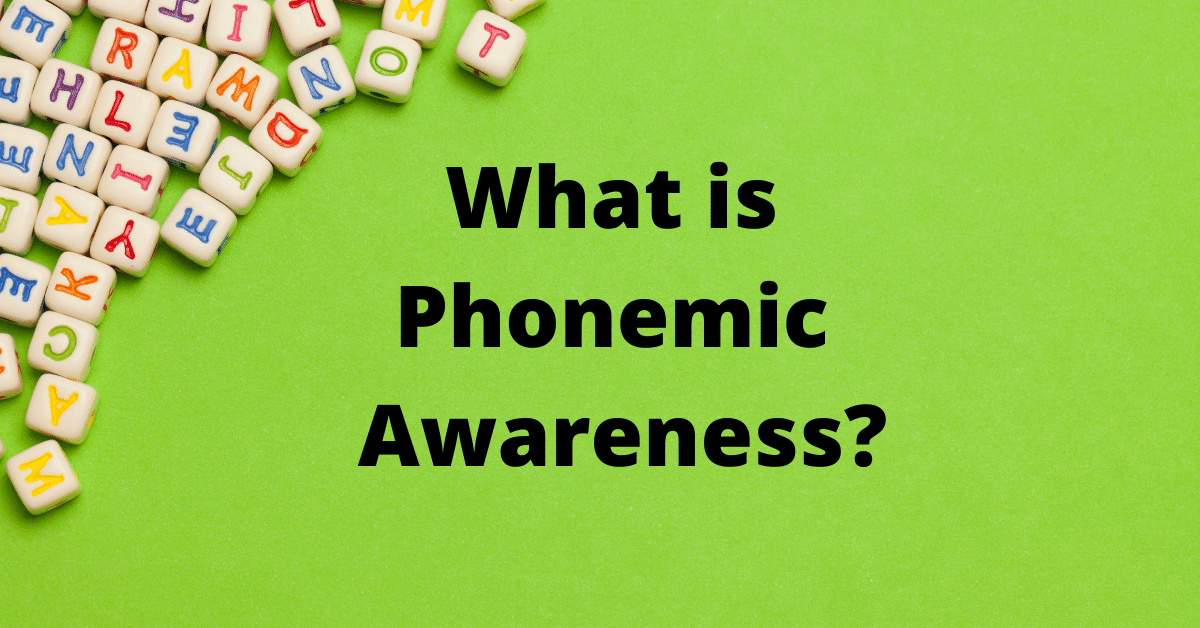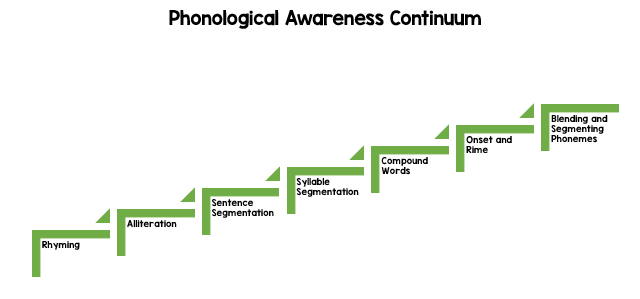
What is phonemic awareness? I am embarrassed to say that when I started teaching, I had never heard the term. Sure, I knew what a phoneme was and we studied phonics instruction in my reading methods class. By golly, I even remember a phonics workbook in 1st Grade. But phonemic awareness was a new term, and I learned that it is powerful for teaching young students to read.
Phonological Awareness
Phonemic awareness is to reading, what numeracy is for math. The ability to hear and manipulate phonemes is the most basic and underlying skill of reading. However, phonemic awareness begins with other pre-reading skills. These skills are part of a broader area called phonological awareness. When working with other teachers, I often say that this set of skills was learned on our mother's lap. These skills are part of a continuum and the phonological awareness continuum is what helped me to understand the progression. To better understand, grab a free Phonemic Awareness Guide.

- Rhyming – matching the end of the word – cat, hat, mat, sat
- Alliteration – matching the beginning of the word – Sally sips soda.
- Sentence Segmentation – separating words in sentences – The cat ran. (3 words)
- Syllable Segmentation – segmenting words into syllable – can-dy
- Compound Words – blending and segmenting compound words – rain/coat becomes raincoat
- Onset and Rimes – blending and segmenting the initial consonant (onset) and the vowel and consonant after it (rime) – /b/ /ake/
- Phonemes Blending and Segmenting – Blending phonemes into words and segmenting words into sounds /bat/ segments to become /b//a//t/ or /k//i//t/ blends to be /kit/
What we call phonemic awareness is actually the last three points on the continuum and that is the blending and segmenting. Students who cannot blend and segment have difficulty sounding out words or writing words that use the sounds in a word.
It's Not Phonics
One caution is that phonemic awareness and phonics are not the same skills but they do begin to overlap. When you are teaching phonemic awareness, you are working orally. When you add printed letters to the activities, it becomes a phonics activity. Your students need both. They need to be able to hear sounds at the beginning of words, blend sounds together, and segment the sounds in words to become efficient readers and writers. All of these skills are based in phonemic awareness. They also must know their letters and sounds in order to read and write and that is phonics.
Teaching Phonemic Awareness
Once I understood what phonemic awareness was, it became easier to teach the progression of skills. It also became easier to help students who were at various places in their learning, especially those who were struggling. I look back at this continuum when I have a student who is not hearing sounds. It helps to pinpoint the difficulty. Can they rhyme or can they hear alliteration? Finding a correct starting point on the continuum helps to fill in gaps. Many children develop these skills as preschoolers. Reading to children helps them hear sounds. Conversely, when students have not been read to this continuum becomes even more important. As teachers, we must make sure our universal instruction gives students rich experiences. You can do this with read alouds, poems, and songs so they can develop this sound and print knowledge.
So what is phonemic awareness? Phonemic awareness is the final three skills on the phonological awareness continuum. It starts with blending and segmenting compound words, then onset and rimes, and finally phonemes. Students need to understand how sounds blend or segment a word before they can blend letter sounds together to read. Oral activities or picture sorts are a great way to practice hearing sounds.


This is such an informative post! Thank you.